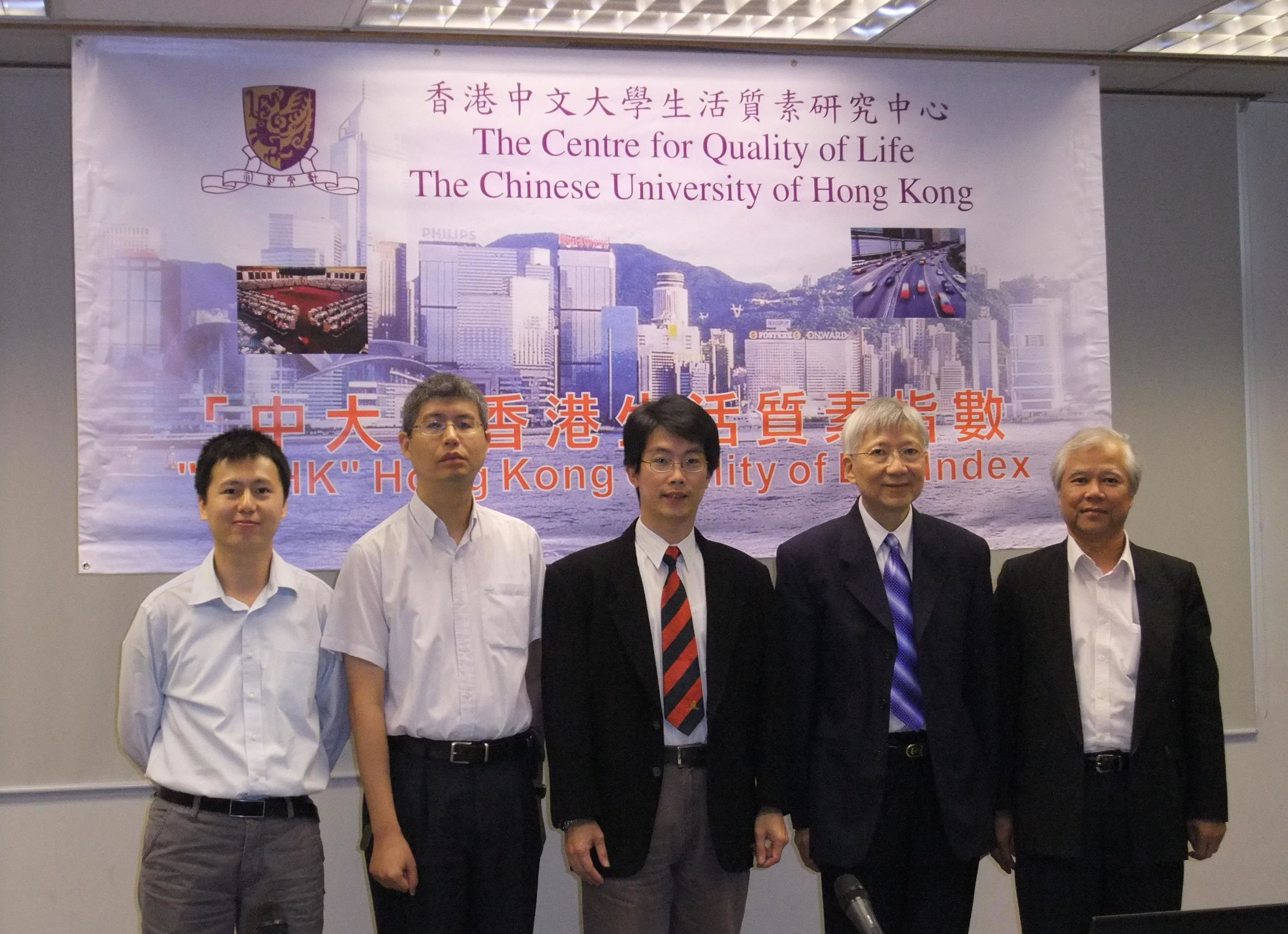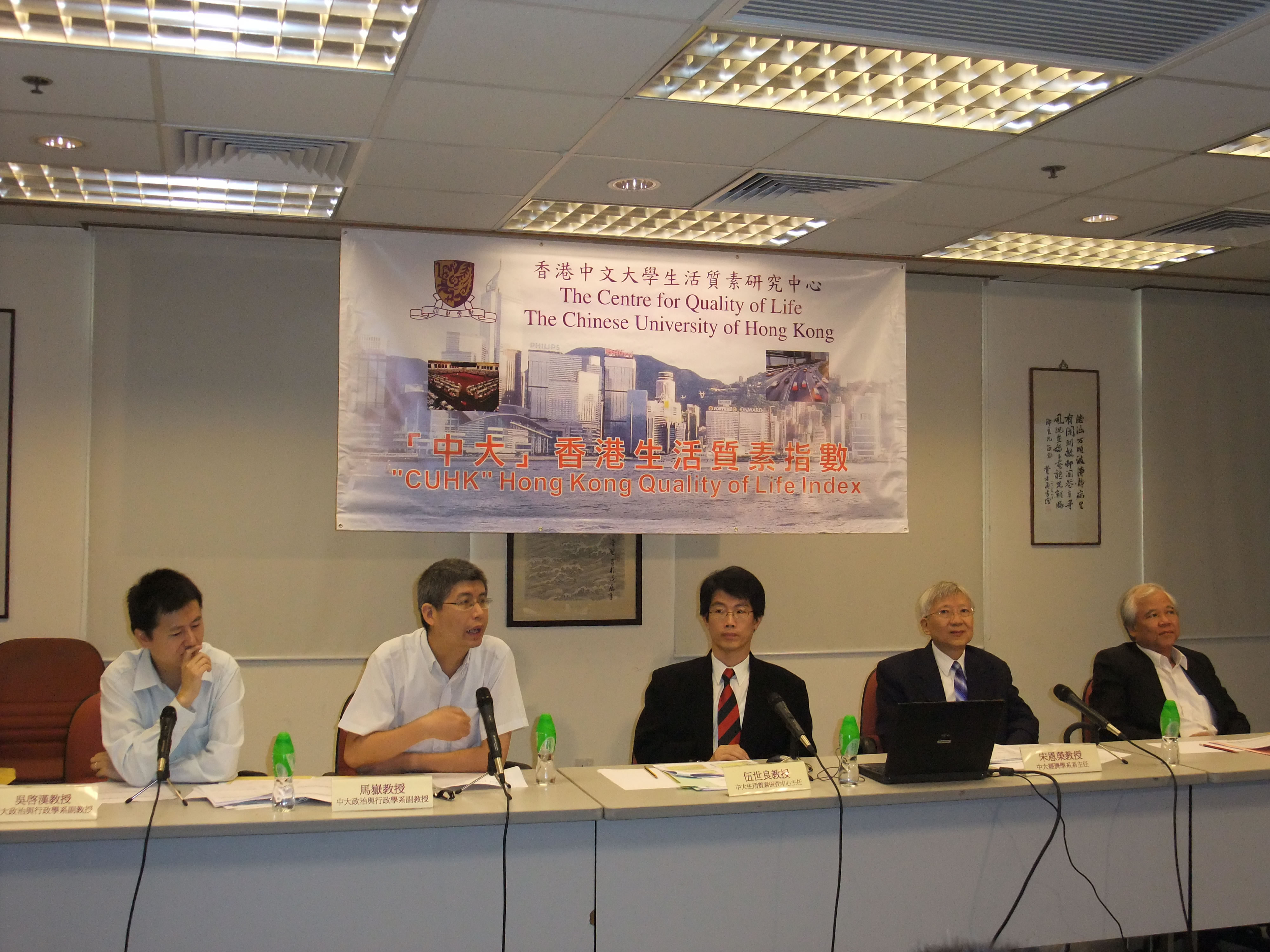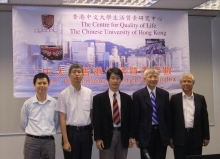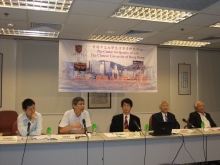CUHK
News Centre
CUHK Hong Kong Quality of Life Index: Quality of Life in Hong Kong Drops to Five-year Low
The CUHK Hong Kong Quality of Life Index of 2008, compiled by the Centre for Quality of Life of The Chinese University of Hong Kong (CUHK), sank to its five–year low. The 2008 Index fell to 104.93, a drop of 3.85 points (i.e. 4%) from the 2007 index and was the lowest since 2003.
According to the CUHK Hong Kong Quality of Life Index of 2008, the overall score in 2008 is 104.93, though slightly higher than that of 2003 (104.20), was lower than those of 2007 (108.78), 2006 (108.93), 2005 (108.34), and 2004 (105.78), indicating that the quality of life in Hong Kong has dropped to the lowest since 2003 (Appendix 1).
The Index consists of 21 indicators that are grouped into three sub-indices, viz. social, economic and environmental (Appendix 2). The indicators are selected according to the coverage, measurability, representativeness, and importance to the quality of life in Hong Kong. Both the social and economic sub-indices recorded drops, the most notable being the economic sub-index, which sank to its record low. The environmental sub-index was the only one among the three sub-indices to have shown improvement.
Compared with the previous year, 10 out of the 21 indicators worsened in 2008 (Appendix 3). Under the social sub-index, the most notable indicator is the government performance index, which showed a 29 percentage-point decrease from that of 2007. Under the economic sub-index, the most noticeable drop is found in the housing affordability ratio and the index of current economic conditions (i.e. public attitude towards the economic conditions in Hong Kong), which decreased by 33 and 30 percentage-point respectively comparing with that of 2007.
Compared with the 2007 figures, 9 out of the 21 indicators improved in 2008 (Appendix 4). The notification rate of notifiable infectious diseases has leaped by 33 percentage-point from that of 2007. All four indicators under the environmental sub-index went up, indicating that the air quality, water quality, noise pollution and the recycle rate of solid waste had improved. Besides, the standardized mortality rate and life expectancy at birth remained unchanged (Appendix 1).
The CUHK Hong Kong Quality of Life Index was designed by the Faculty of Social Science in 2003. This composite index is intended to measure and keep track of the quality of life in Hong Kong in the 21st century, and to provide policy makers and the community with a useful reference tool. It also aims at enhancing the quality of life in Hong Kong by drawing the public’s attention to this issue. Starting from the year of 2003, the Index has been released annually. For this reason, the Centre for Quality of Life has been set up to conduct on-going quality of life research.
2002 was the base year of the study, and the CUHK Hong Kong Quality of Life Index for that year was set at 100. If the Index of a subsequent year is above 100, it means that the quality of life in Hong Kong in that year is better than that of 2002. If the index is below 100, it reveals that the quality of life in Hong Kong in that year is worse than that of 2002. If the Index is 100, it indicates that the Hong Kong quality of life in that year is the same as that of 2002.
For more information on the CUHK Hong Kong Quality of Life Index, please visit The Centre for Quality of Life website: www2.cuhk.edu.hk/ssc/qol.
From left: Prof. Ng Kai Hon, Assistant Professor, Department of Government and Public Administration, CUHK; Prof. Ma Ngok, Associate Professor, Department of Government and Public Administration, CUHK; Prof. Ng Sai Leung, Director, Centre for Quality of Life and Associate Professor, Department of Geography and Resource Management, CUHK; Prof. Sung Yun Wing, Chairman, Department of Economics, CUHK; Prof. Paul Lee, Dean of Faculty of Social Science; Director, Hong Kong Institute of Asia-Pacific Studies and Professor, School of Journalism and Communication, CUHK





